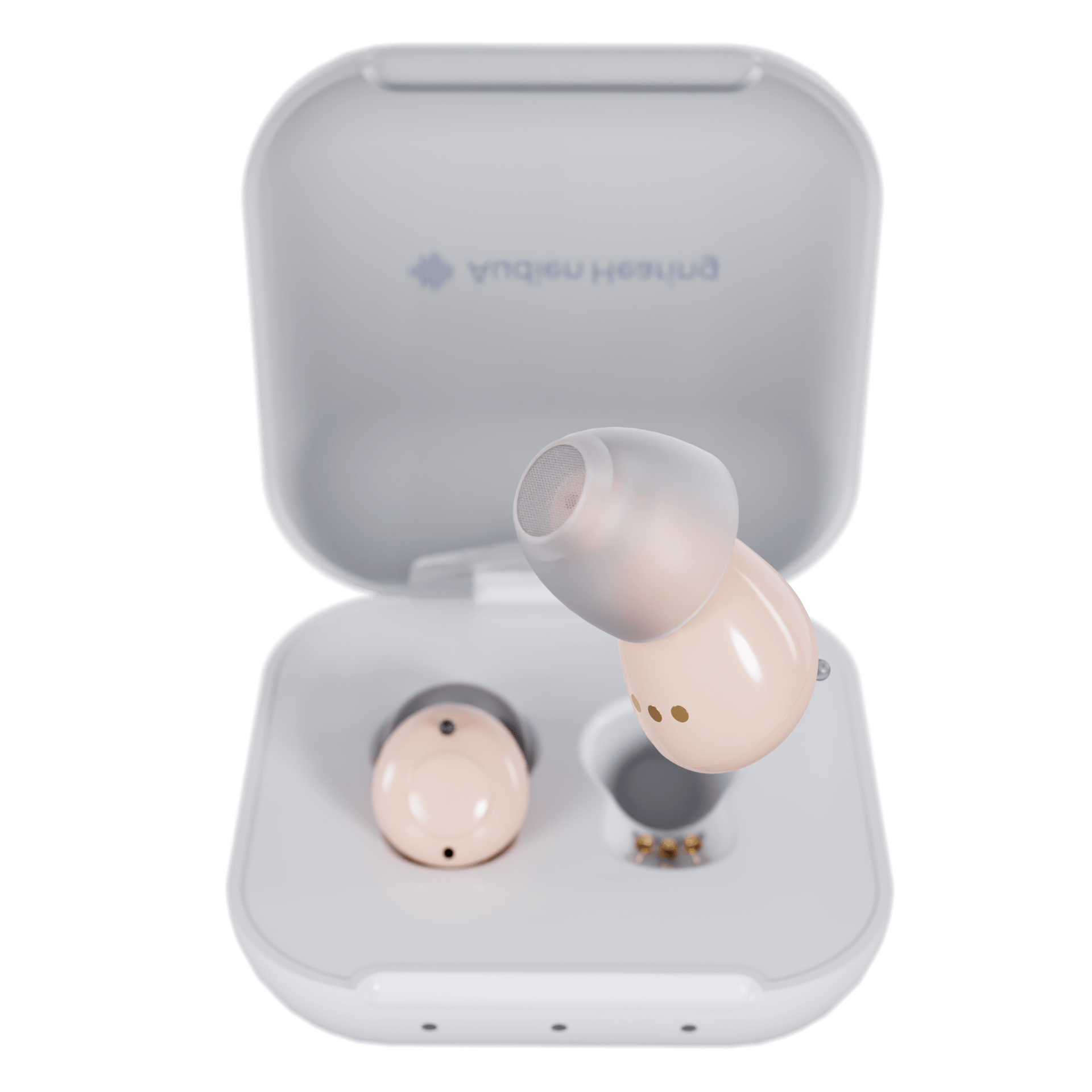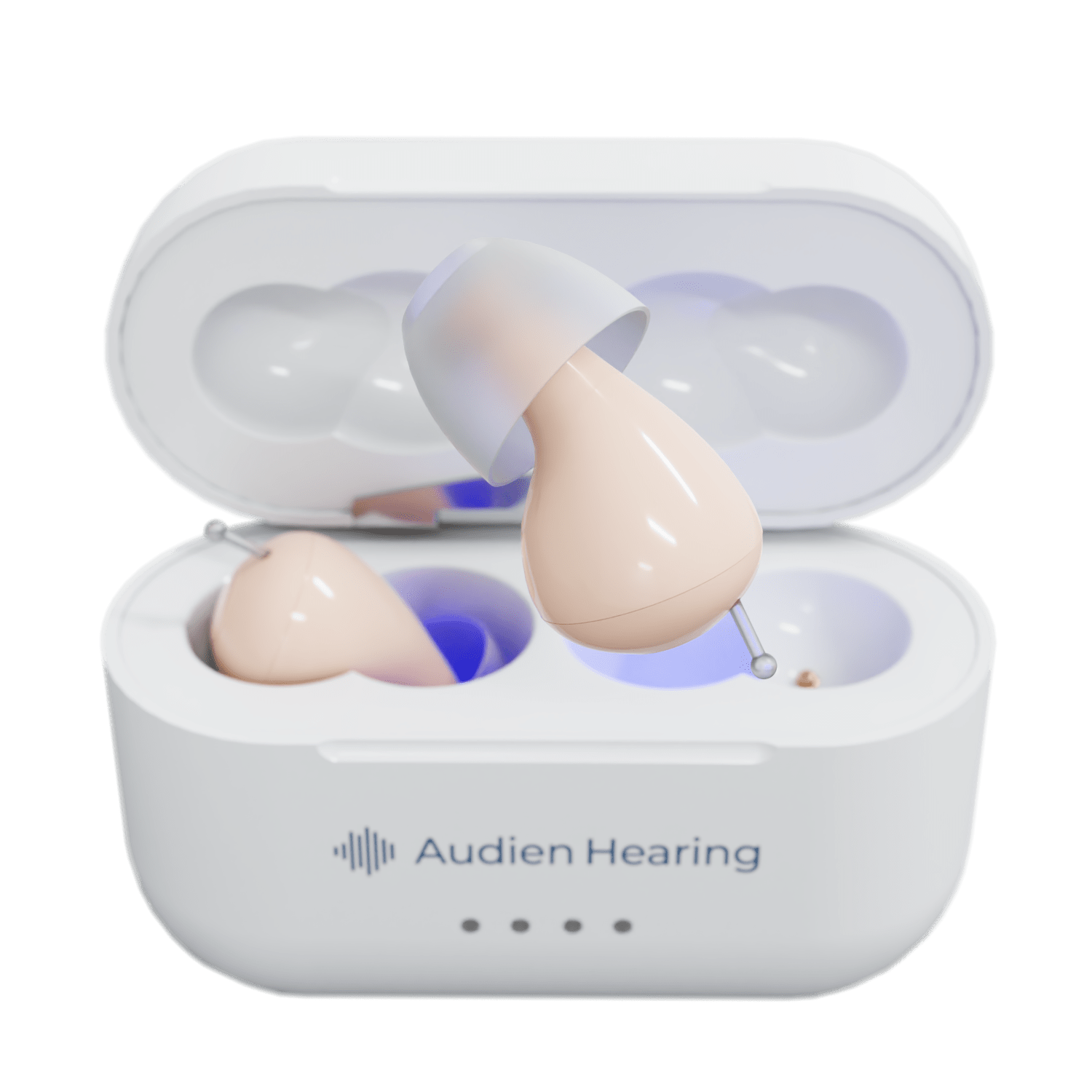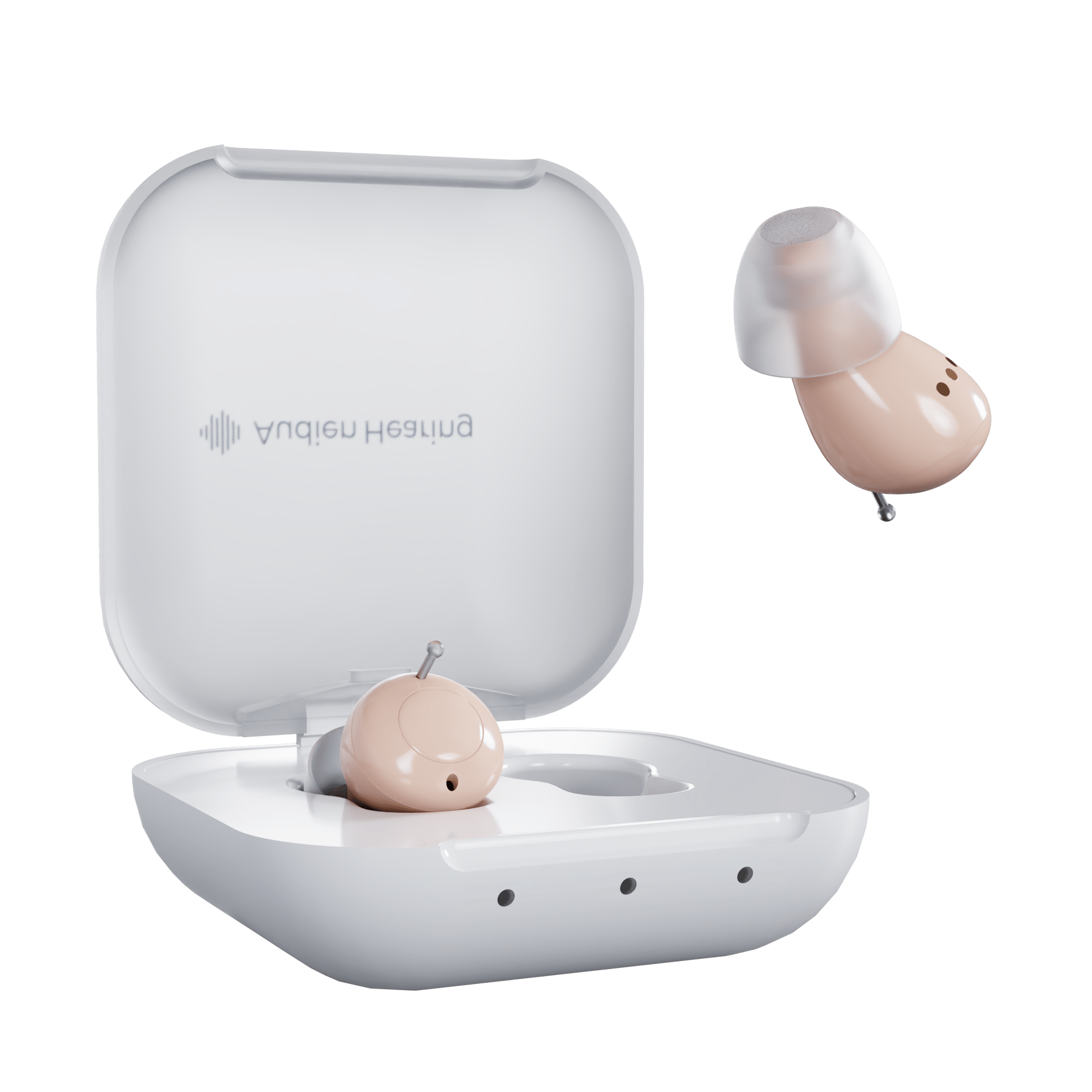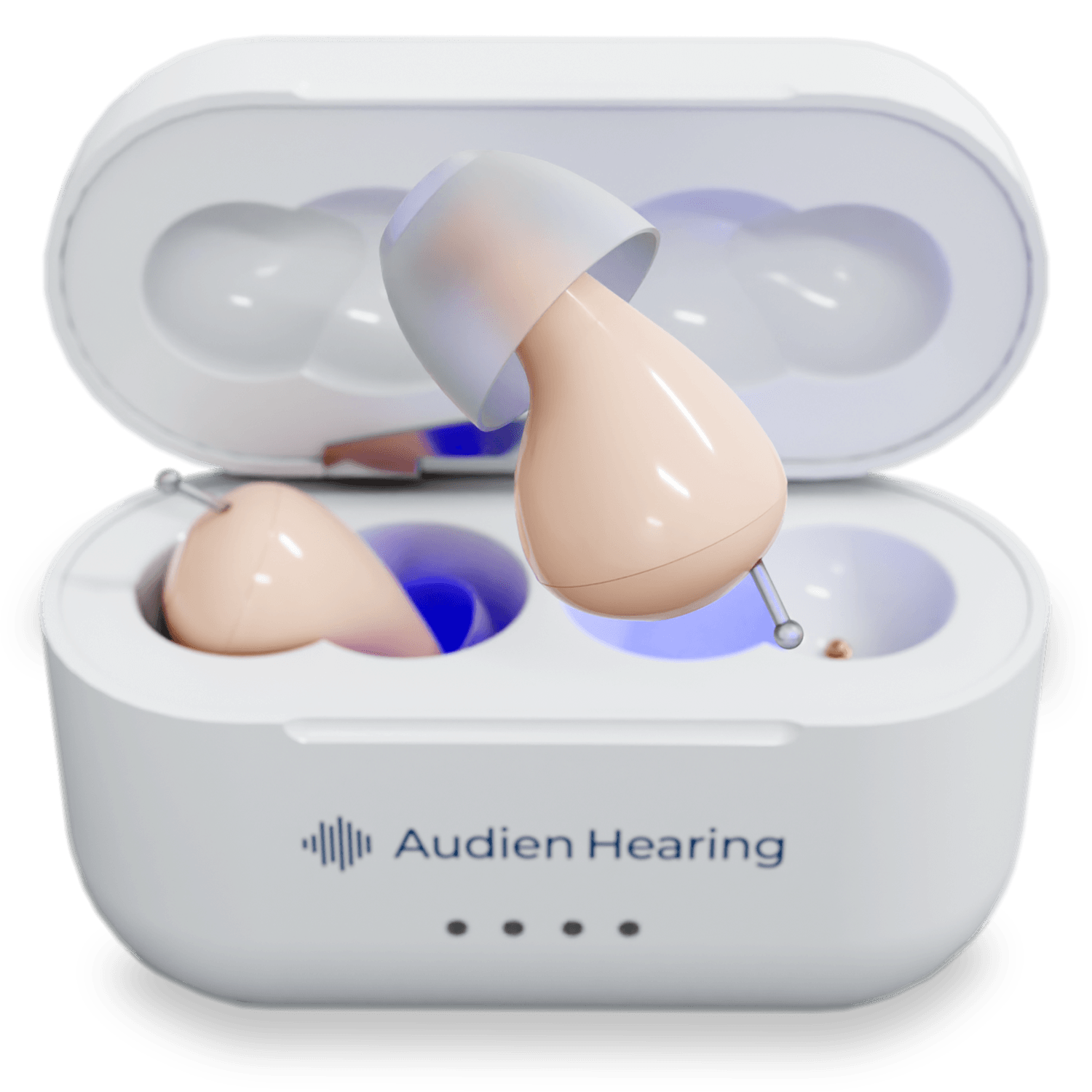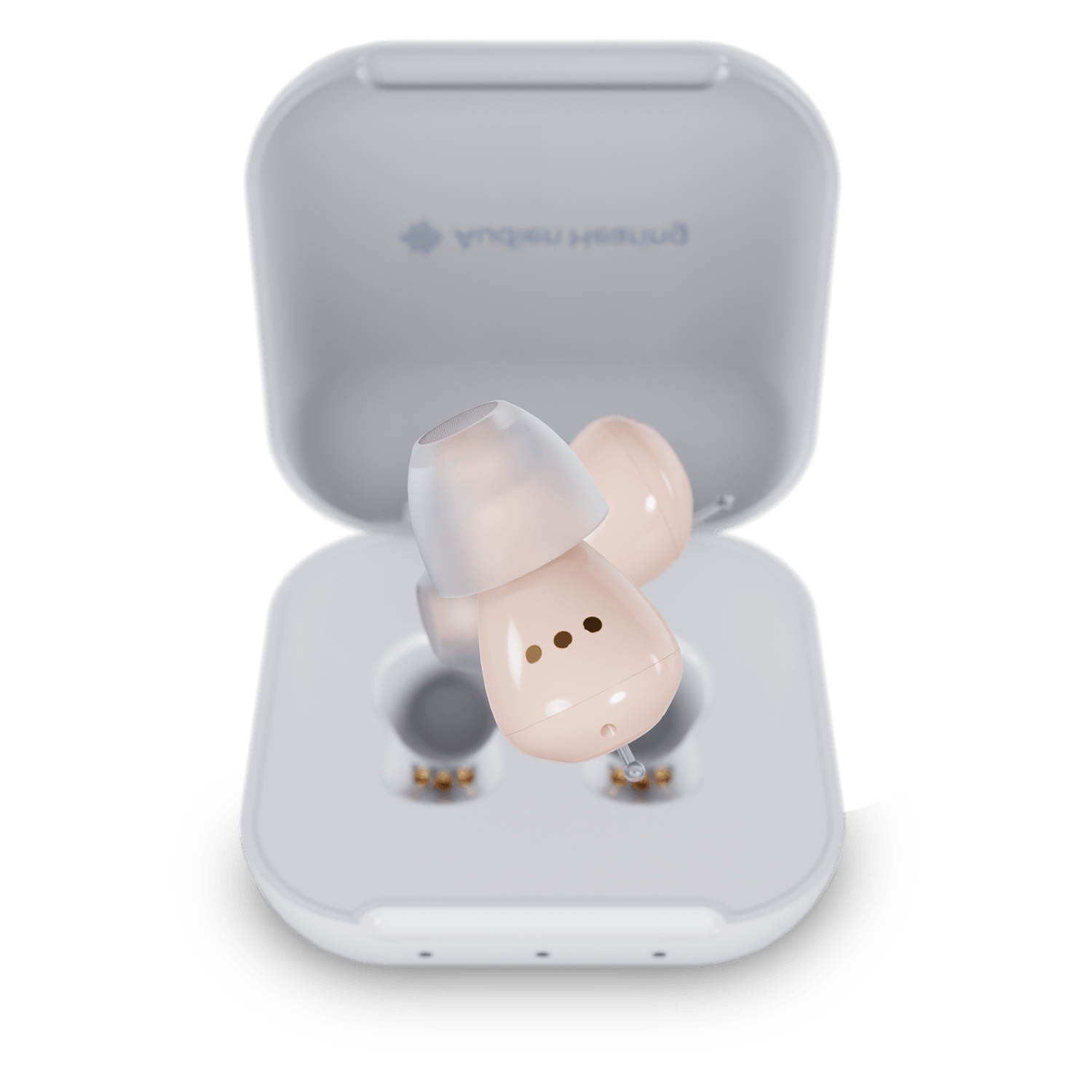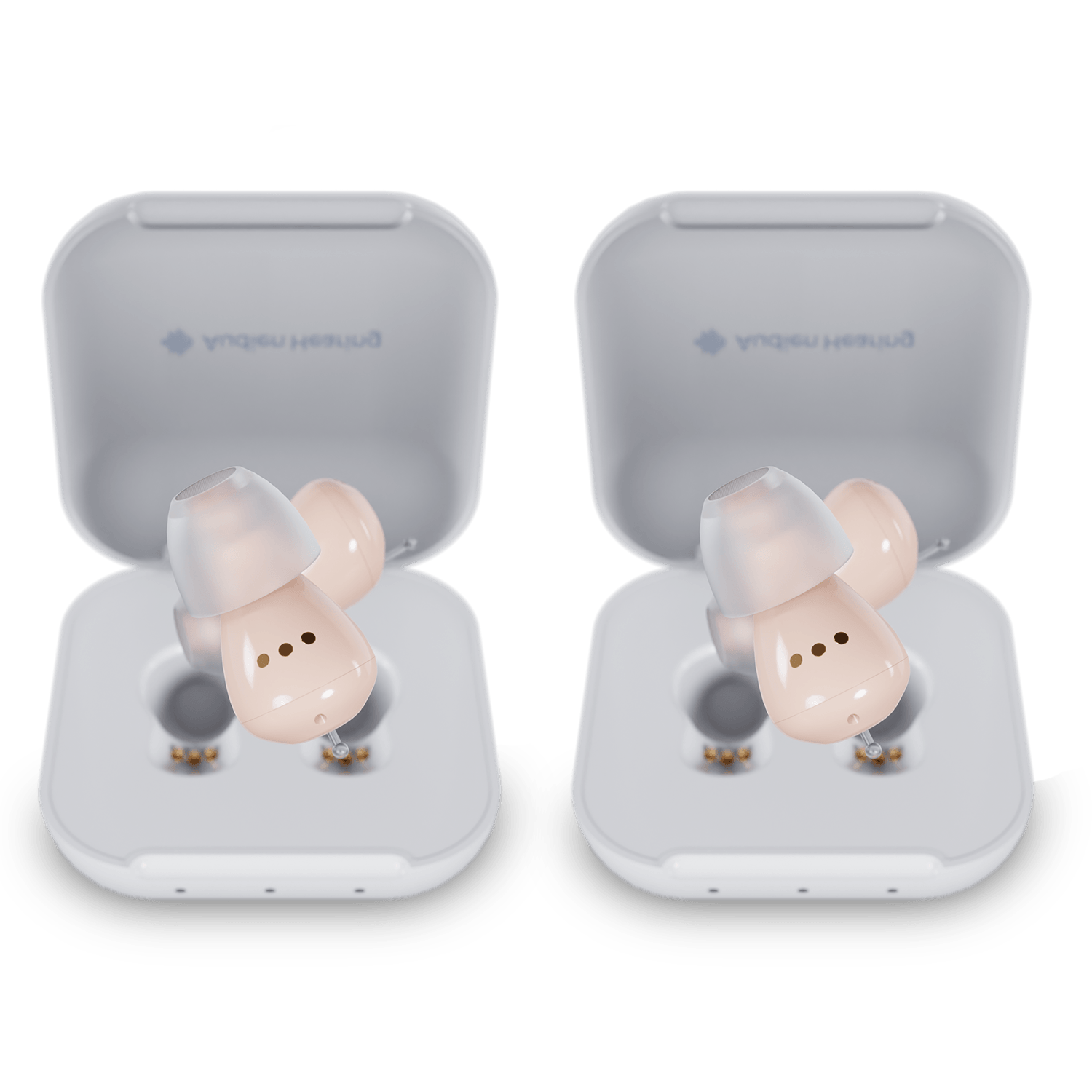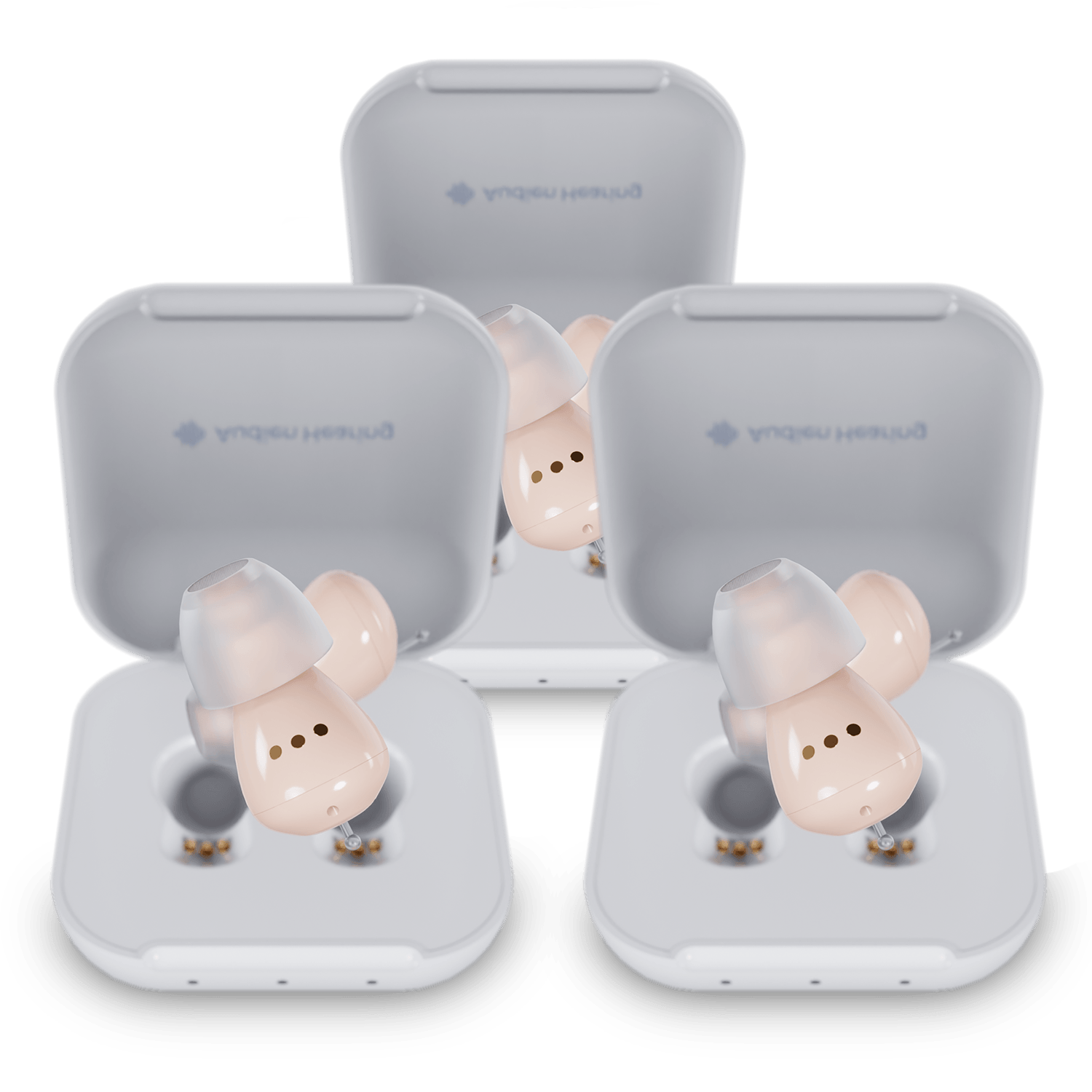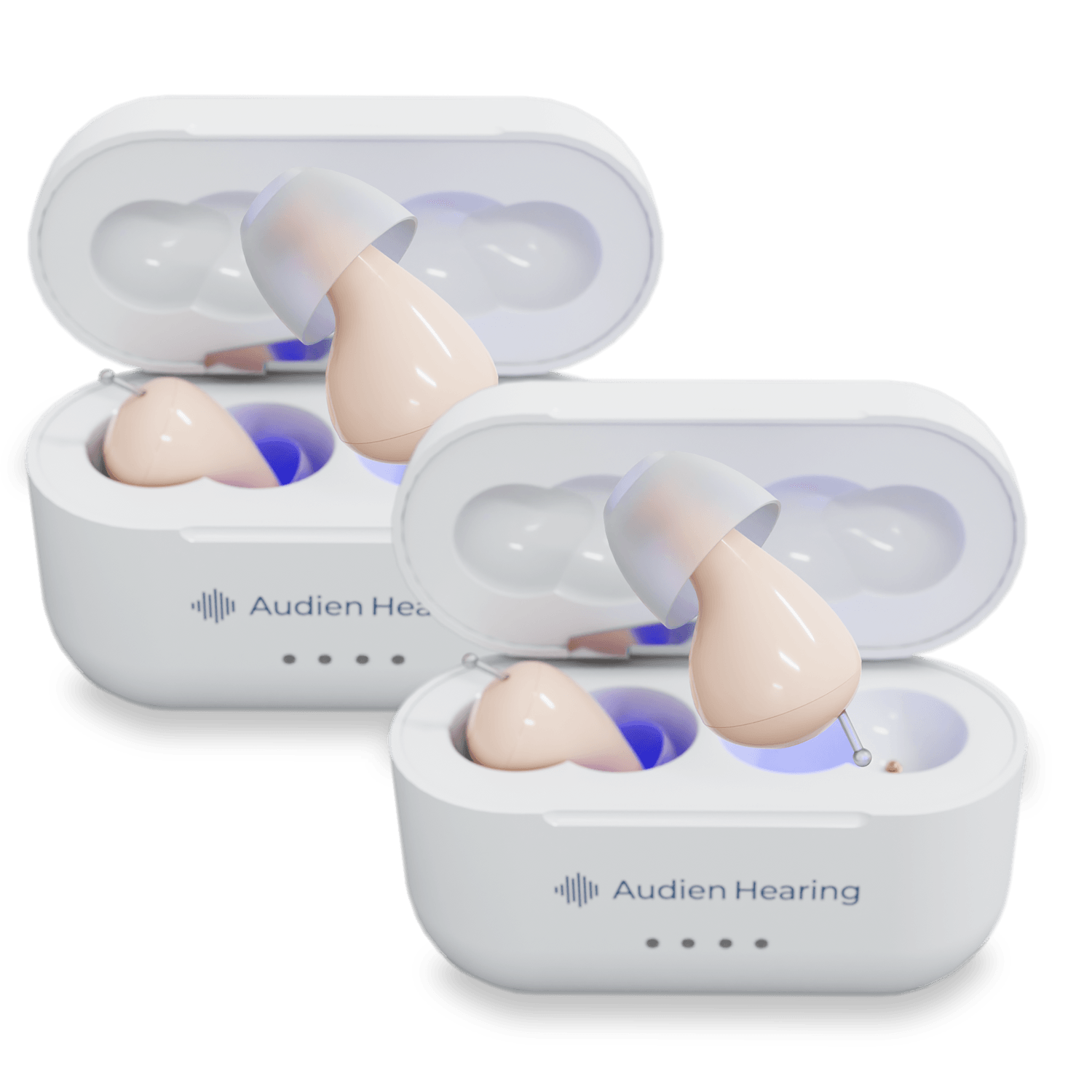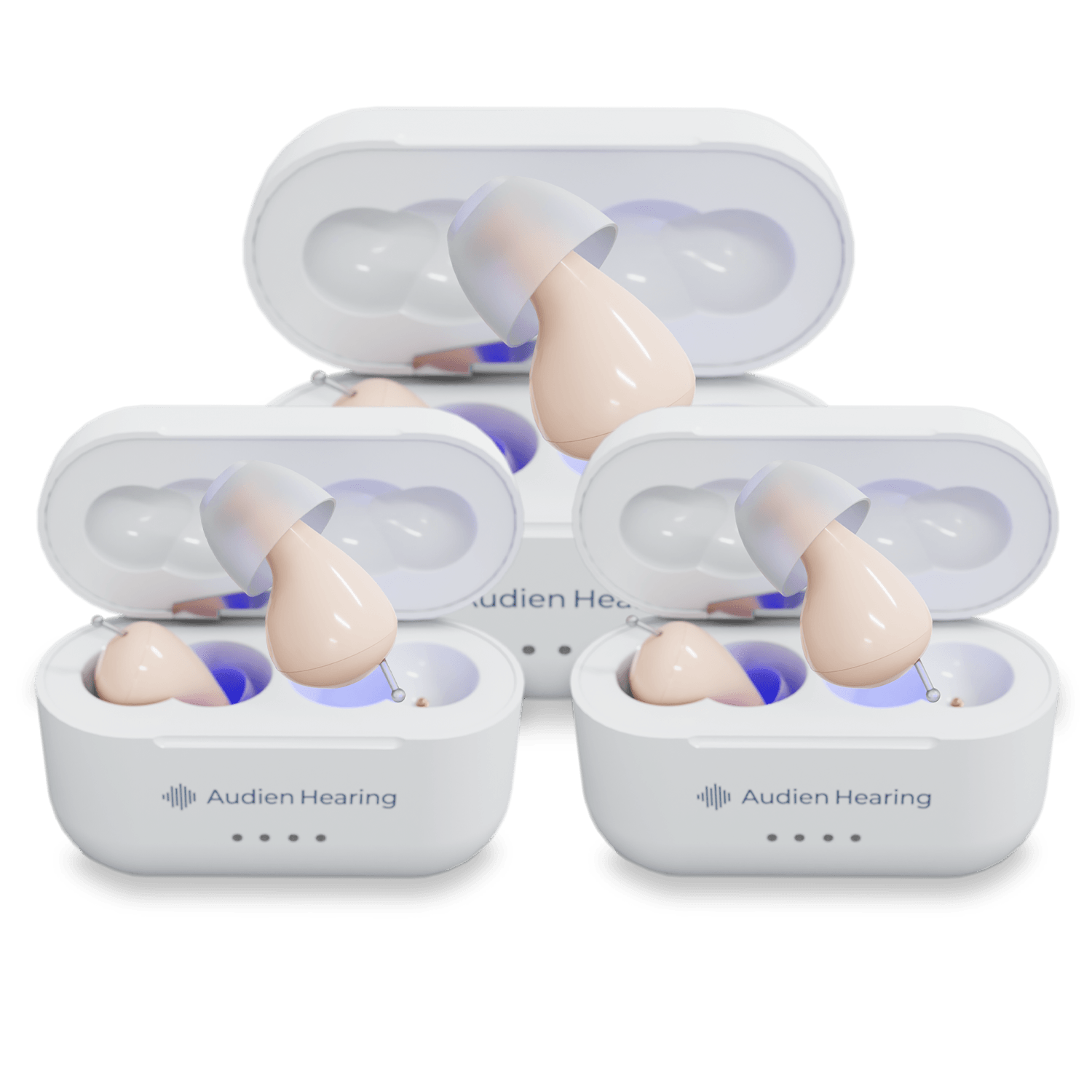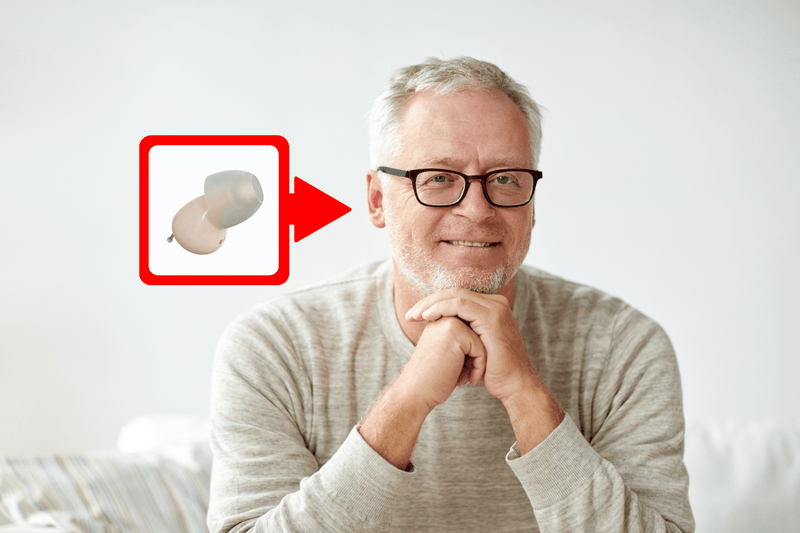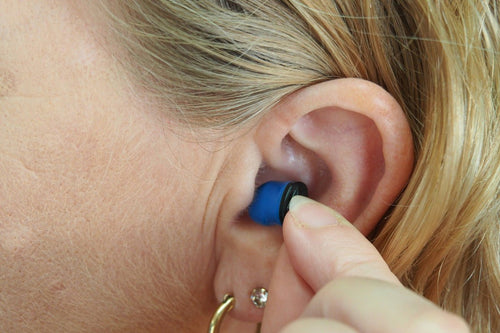The first morning you try to put on both your hearing aids and glasses, you realize you have a logistics problem.
The arms of your glasses compete with your hearing aids for the same real estate behind your ears. Something's got to give. You stand there, holding both, wondering if you'll have to choose between seeing clearly and hearing well.
As an audiologist, I hear this concern from nearly every patient who wears glasses. The worry is real, but so are the solutions. Let me show you how thousands of people successfully wear both every single day.
You can absolutely wear glasses and hearing aids together. For many people, it’s no issue at all — they barely notice both on their ears. For others, it can feel a bit crowded or uncomfortable, especially with behind-the-ear devices. Most of the time, it comes down to personal preference. As long as your hearing aids are fitted correctly and you’re not experiencing feedback, there’s no reason you can’t use both comfortably.
The Behind-the-Ear Challenge

If you're considering behind-the-ear (BTE) hearing aids like the Ion series, your concern about glasses is understandable. You're trying to balance two devices in a space that feels barely big enough for one. Add a face mask to the mix, and you've got a three-way battle for ear territory.
The morning routine can feel like playing Jenga with your ears. Some people need help checking that everything is positioned correctly. Putting on glasses becomes a multi-step process rather than the simple action it used to be.
Here's what's actually happening: modern BTE hearing aids are designed with glasses in mind. The Ion series sits close to your head with a slim profile that accommodates glasses arms. But success requires proper positioning and a few simple techniques.
The key is order of operations. Put your hearing aids on first, then your glasses. This allows the hearing aid to sit properly against your head while the glasses arms rest naturally over them. When removing, reverse the order: glasses off first, then hearing aids. This prevents accidentally pulling your hearing aids off with your glasses—a mistake that can send expensive devices flying.
Why In-the-Ear Models Eliminate the Problem

Here's where in-the-ear (ITE) hearing aids like the Atom series shine. They sit entirely in your ear canal, leaving the space behind your ears completely free. No competition, no juggling, no problem.
For glasses wearers, ITE models offer compelling advantages:
-
Zero interference with glasses arms
-
No tangling when putting on or removing glasses
-
No pressure points behind the ears
-
Freedom to wear sunglasses spontaneously
-
Easier with face masks
The Atom Pro 2, being one of the smallest ITE options available, is particularly ideal for glasses wearers. The devices essentially avoid each other entirely, which is exactly what you want. You can grab any pair of reading glasses without planning a strategic maneuver.
The Daily Dance: Making BTEs Work with Glasses

If you choose BTE models for their features (like the Ion Pro's Bluetooth streaming or six hearing profiles), here's how to make them work seamlessly with glasses:
Morning Routine:
-
Insert hearing aids first, ensuring they're seated properly
-
Put on glasses straight back, not at an angle
-
Adjust glasses arms to sit naturally over the hearing aid
-
Check that nothing feels pinched or pressured
Throughout the Day:
-
When switching between regular glasses and sunglasses, move slowly
-
Keep one hand on your hearing aid while removing glasses
-
Consider glasses with thinner arms if yours are particularly thick
-
Adjust mask straps to avoid the hearing aid area
Common Issues and Fixes:
-
If glasses push hearing aids out: Try adjusting the retention piece or dome size
-
If you feel pressure: The glasses arms might be too tight; have them adjusted
-
If hearing aids whistle when putting on glasses: This is temporary and normal
Real-World Scenarios Glasses Wearers Face

The Sunglasses Switch: You're outside and need sunglasses. With ITE hearing aids, you swap glasses without thinking. With BTEs, you develop a careful choreography: hold the hearing aid, remove regular glasses, slide on sunglasses, check hearing aid position. It becomes automatic, but it's still an extra step. Some people stop wearing sunglasses entirely because the switch feels too complicated.
The Restaurant Fumble: You're handed a menu in dim lighting. You need your reading glasses. With ITEs, you simply put them on. With BTEs, you're doing the careful dance while the waiter hovers. Not impossible, just noticeable. There's always the risk of knocking a hearing aid onto your plate.
The Exercise Dilemma: Working out with glasses and BTEs means three things potentially moving around. Many people remove one or both for exercise. With ITEs, your glasses and hearing stay put independently.
The Emotional Weight of Ear Real Estate
Here's what people don't talk about: the psychological burden of managing multiple devices on your ears. Glasses, hearing aids, sometimes a mask, occasionally earbuds for music—your ears work overtime before your day even starts.
This isn't vanity—it's about cognitive load. Every additional thing you have to manage, adjust, and worry about takes mental energy. When putting on glasses risks dislodging your hearing aids, that simple act becomes a source of daily stress. It really is preference - everyone is different!
Special Considerations for Different Glasses Types

Progressive Lenses: These require specific head positions to see clearly at different distances. BTEs can occasionally interfere with how you tilt your head. ITEs never affect your head positioning.
Heavy Frames: Thick, heavy frames put more pressure behind your ears. Combined with BTEs, this can become uncomfortable during long wear. The solution? Lighter frames or ITE hearing aids.
Sports Glasses: Wraparound styles with thick arms are particularly challenging with BTEs. The arms often sit exactly where the hearing aid needs to be. For active glasses wearers, ITEs are usually the better choice.
The Comfort Factor
Let's be honest about comfort. Wearing BTEs with glasses all day can create pressure points. It's like wearing a hat that's slightly too tight—tolerable but noticeable. Some people adjust and forget about it. Others find it becomes a daily annoyance.
By evening, many people can't wait to take everything off their ears. The relief when removing both glasses and BTEs is real—your ears have been working overtime just holding up equipment.
With ITEs, your ears bear weight in different places. Glasses sit where they always have. Hearing aids occupy the canal. No competition, no pressure points, no end-of-day relief ritual.
Making Your Choice
When deciding between BTE and ITE with glasses in mind, consider:
Choose BTE (Ion series) if:
-
You need maximum power for severe hearing loss
-
Bluetooth streaming is essential to you
-
You want the longest battery life (48 hours)
-
You're okay with the glasses juggling act
-
You rarely switch between different glasses
-
The advanced features outweigh the convenience issue
Choose ITE (Atom series) if:
-
Glasses comfort is a top priority
-
You frequently switch between glasses types
-
You want maximum simplicity
-
Discretion matters to you
-
You have mild to moderate hearing loss
-
Daily convenience trumps advanced features
The Liberation of the Right Choice

When you find the right combination, the relief is profound. Whether it's mastering the BTE-glasses dance or discovering the freedom of ITEs, that moment when everything works changes everything.
Getting ready in the morning stops feeling like solving a puzzle. For those who master the BTE technique, it becomes automatic. For those who choose ITEs for simplicity, the freedom is immediate.
Practical Tips for Any Choice
If you go with BTEs:
-
Have your optician adjust your glasses arms for optimal fit
-
Consider frames with thin, flexible arms
-
Keep a microfiber cloth handy (more handling means more smudges)
-
Be patient during the adjustment period
-
Remember: the features might be worth the learning curve
If you choose ITEs:
-
Ensure proper dome fit to prevent any movement
-
Keep them clean (glasses-free ears mean easier access)
-
Take advantage of the freedom to wear any glasses style
-
Enjoy grabbing reading glasses without planning
The Bottom Line: Don't Let Glasses Stop You

Can you wear hearing aids with glasses? Absolutely. Millions do it daily. But here's the real question: should you have to struggle with complicated daily choreography just to see and hear clearly?
BTEs like the Ion series offer powerful features and long battery life but require coordination with glasses. You'll develop a routine, and it will become second nature. The payoff is access to advanced features like Bluetooth streaming and multiple hearing profiles. For many, these features justify the extra effort.
ITEs like the Atom series eliminate the glasses conflict entirely. Your ears stay comfortable, switching glasses is effortless, and you never worry about knocking off a hearing aid when removing sunglasses. The simplicity itself becomes a quality-of-life improvement.
Your glasses shouldn't determine whether you hear clearly. And more importantly, the fear of managing both shouldn't keep you from addressing hearing loss. That's like refusing to fix your vision because you already have hearing aids—it makes no sense.
With Audien's 45-day trial, you can test your chosen style with your glasses in real-world situations. Wear them to work, switch to sunglasses, exercise, live your normal life. You'll quickly discover whether BTEs and glasses can coexist comfortably for you, or whether the simplicity of ITEs better suits your needs.
Don't let glasses be the barrier between you and better hearing. You deserve to see the sunset clearly AND hear the birds singing. You deserve to read the menu AND hear the specials. The solution exists—you just need to find which one lets you live freely, without turning simple actions into complex negotiations.
